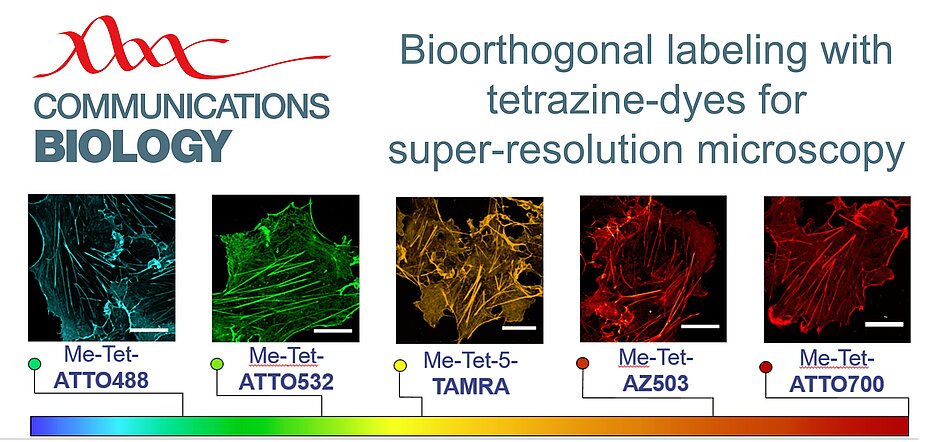Bioorthogonal labeling with tetrazine-dyes for super-resolution microscopy.
07/29/2019Genetic code expansion (GCE) technology allows the specific incorporation of functionalized noncanonical amino acids (ncAAs) into proteins. Here, we investigated the Diels-Alder reaction between trans-cyclooct-2-ene (TCO)-modified ncAAs, and 22 known and novel 1,2,4,5-tetrazine-dye conjugates spanning the entire visible wavelength range. A hallmark of this reaction is its fluorogenicity - the tetrazine moiety can elicit substantial quenching of the dye. We discovered that photoinduced electron transfer (PET) from the excited dye to tetrazine is the main quenching mechanism in red-absorbing oxazine and rhodamine derivatives. Upon reaction with dienophiles quenching interactions are reduced resulting in a considerable increase in fluorescence intensity. Efficient and specific labeling of all tetrazine-dyes investigated permits super-resolution microscopy with high signal-to-noise ratio even at the single-molecule level. The different cell permeability of tetrazine-dyes can be used advantageously for specific intra- and extracellular labeling of proteins and highly sensitive fluorescence imaging experiments in fixed and living cells.









